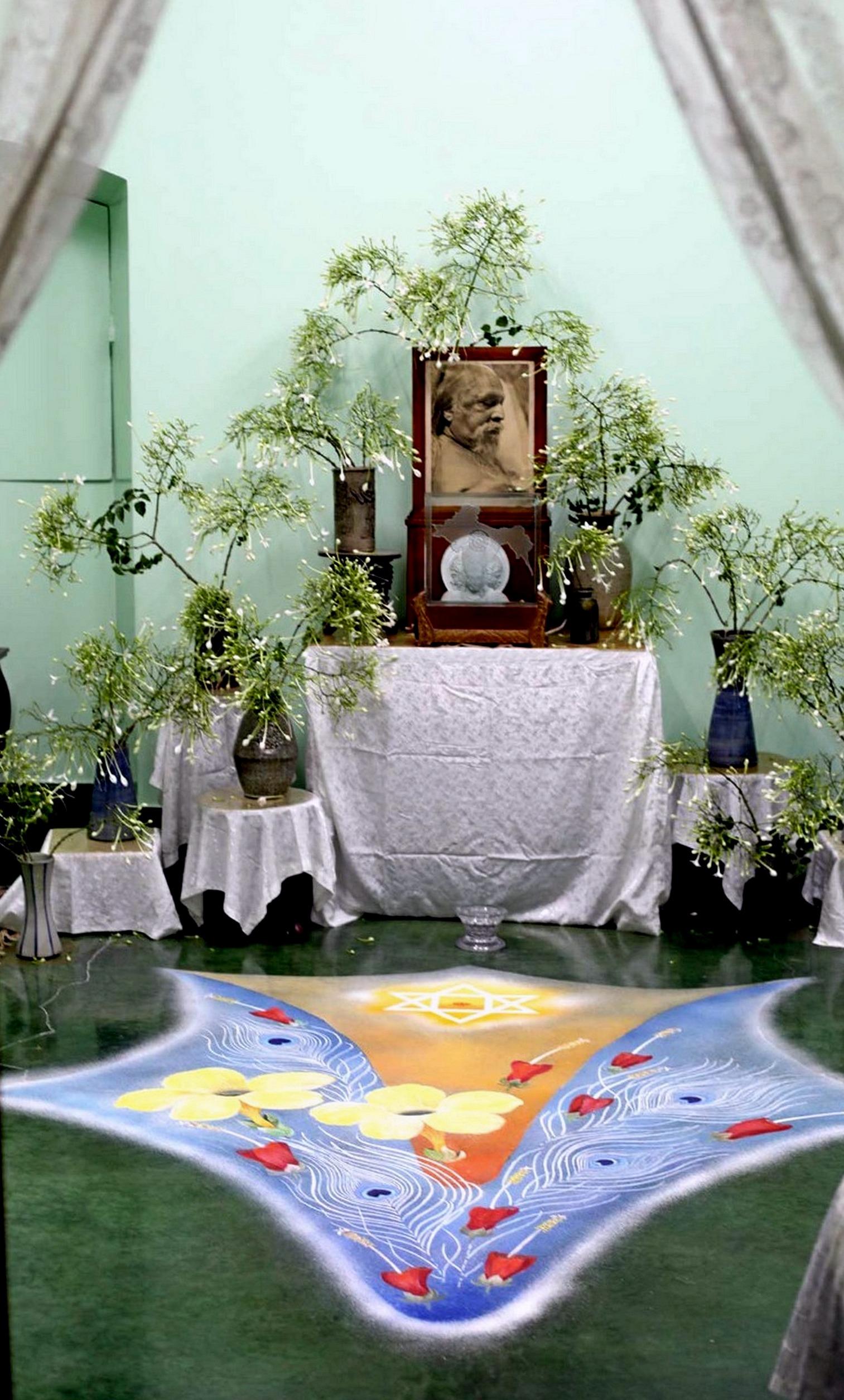 There are a number of transitional moments in Sri Aurobindo’s life, each having an impact upon the life around him and even on the life of India and the earth. The year 1905 saw him plunge into the Indian Independence movement with far reaching stirring it with an entirely new life, the soul-life if one may say so. The 04th of April 1910 was one such transitional moment when Sri Aurobindo landed in Pondicherry following an inner adesh turning the then ghost town into his seat and cave of tapasya. The coming of the Mother and their momentous meeting on the 29th March 1914 heralded the writings on the Arya that would later become lighthouses of the highest and most comprehensive spiritual wisdom ever given to man. The Mother’s permanent coming on the 24th April 1920 became the starting point of a nucleus of young seekers and aspirants drawing nearer to the Master culminating in another great moment of transition, the 24th November 1926 which is known as the Siddhi Day.
There are a number of transitional moments in Sri Aurobindo’s life, each having an impact upon the life around him and even on the life of India and the earth. The year 1905 saw him plunge into the Indian Independence movement with far reaching stirring it with an entirely new life, the soul-life if one may say so. The 04th of April 1910 was one such transitional moment when Sri Aurobindo landed in Pondicherry following an inner adesh turning the then ghost town into his seat and cave of tapasya. The coming of the Mother and their momentous meeting on the 29th March 1914 heralded the writings on the Arya that would later become lighthouses of the highest and most comprehensive spiritual wisdom ever given to man. The Mother’s permanent coming on the 24th April 1920 became the starting point of a nucleus of young seekers and aspirants drawing nearer to the Master culminating in another great moment of transition, the 24th November 1926 which is known as the Siddhi Day.
The 24th November indeed occupies a very special place in the Yogic journey of Sri Aurobindo. It is known as the Siddhi Day and observed as one of the four darshan days, the other three being the 21st February (the Mother’s birthday), 24th April (the Mother’s final coming to Pondicherry), 15th August (Sri Aurobindo’s birthday) and the 24th November as mentioned above. It is generally known and understood as the day when Sri Krishna, his earthly personality as the Avatar of the Dvapara Yuga (Age of Bronze) fused with Sri Aurobindo thereby paving the way for the future Supramental possibility for earth and mankind. Implicit in this realisation is the secret knowledge of Avatarhood preserved in India about the Divine descents or incarnations upon earth. Just as the soul has entered the fields of nature with all its obscurity and ignorance and suffering to redeem and restore it to the heights from where it fell, so too the Divine enters the flux and flow of nature to rescue it out of the darkness and disorder in which it has fallen. Even as the soul leaves one body and migrates into another when its work is over the Divine too ushers an Age gives us the law appropriate for the Age the Yugadharma, to assist the forward march of humanity, and when the Work is done, he withdraws from the earthly scene to allow the evolutionary force quickened by His Presence to take over. It does not mean that He abandons the work or the field. He simply withdraws into the background so that humanity may evolve through the evolutionary challenges and the choices. Yet he watches over us, individually over those who have turned towards the earthly embodiment of the Divine as the Avatar and who tie themselves to Him through the cord of faith. But also he watches over the collective march of mankind guides and subtly influences the procession of events from within the heart of the creatures setting new benchmarks and standards for the World Soul to embody and manifest the new possibilities that the incarnate Divine brings. He helps the march from within the soul of man pushing it along the paths he has opened by planting a new and greater faith and aspiration. At the same time He also assists by sending His Vibhutis who do His Work in the world. The sequence of Avatars provides a continuity to the collective evolution upon earth. Each Avatar carries the march of mankind one step forward navigating It through the doors of crisis towards a greater change. It is here we see the first hint of the fusion of Sri Krishna with Sri Aurobindo on the 24th November 1926.
To a pointed question by a disciple, Sri Aurobindo described it thus:
What was said was that the Divine (Krishna or the Divine Presence or whatever you like) had come down into the material….
The descent of Krishna would mean the descent of the Overmind Godhead preparing, though not itself actually bringing, the descent of Supermind and Ananda. Krishna is the Anandamaya, he supports the evolution through the Overmind leading it towards his Ananda. [CWSA 35:271-272]



